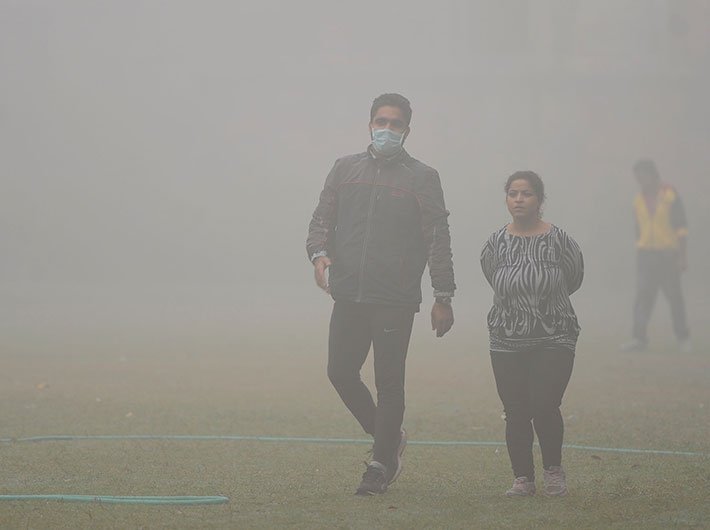You may not realise it, but when you keep the engine idling at red lights and during traffic jams, you are significantly polluting the air.
There are a host of factors which lead to poor quality of air and idling engines is certainly one of them. It is avoidable as the engine can be shut off if the waiting time is considerable.
The Niti Aayog too has highlighted this aspect.
“We need to enforce existing traffic laws with greater force. When vehicles do not stay in the lanes and try to pass other vehicles by frequent changes in lanes, they cause traffic jams and delays. The result is idling of vehicles for much longer than necessary. Enforcing traffic laws will alleviate the problem,” said the Niti Aayog in its three year action agenda.
So, what happens when you keep the engine running?
“An idling engine can produce up to twice as many exhaust emissions as an engine in motion. Exhaust emissions contain a range of air pollutants such as carbon monoxide, nitrogen dioxide, and particulate matter. These can effect the air quality of the surrounding environment and the air we breathe,” said Britain’s Dudley Metropolitcan Borough Council.
In fact, vehicle idling is an offence against the Road Traffic (Vehicle Emissions) (Fixed Penalty) (England) Regulations 2002. The law states that is an offence to idle your engine unnecessarily when stationary. If you fail to turn your engine off after being spoken to you may be issued with a fixed penalty notice of £20, said the council.
India too can consider a penalty on similar lines in an attempt to battle toxic air. The air quality has been exceedingly poor since last week, with thick smog enveloping New Delhi and its adjoining states. Schools were forced to shut down as people were finding it difficult to breath. The schools have re-opened on Monday, but the situation continues to be grim.
A study “Fuel wastage and emission due to idling vehicles at road traffic signals” by K P Tiwari, RN Singh and JB Balwanshi, said that vehicular pollution and fuel wastage is directly or indirectly linked with the population.
“Due to increasing population, numbers of vehicles are increasing, which results in increasing fuel consumption. This is also responsible for road traffic problems. Increasing traffic problems not only responsible for degrading of our atmosphere, it is also responsible for wastage of fuels. Traffic signals have become an invaluable tool in ensuring smooth flow of motor vehicles at crossings.
“Consequently, with orderly flow of traffic, we lose huge quantity of fuel at crossings and creating the pollution for already polluted environment. This is because people often leave the engine of their vehicle running while waiting at signals (Idling). During no load running mode (idling) of the vehicular engine, the air supply is restricted by the nearly closed throttle and the suction pressure is very low. This low pressure condition gives rise to backflow of exhaust pressure, results an increase the amount of residual gases and reducing the fresh mixture inhaled. Idling increases dilution causes the combustion to be erratic, irregular and slow, so obtained, results in poor thermal efficiency and higher exhaust emission,” said the study that appeared in International Journal of Research in Engineering and Technology.
Study after study has shown that idling engines are also responsible for polluting the air.
The study “Air pollution and health risks due to vehicle traffic” that traffic congestion increases vehicle emissions and degrades ambient air quality, and recent studies have shown excess morbidity and mortality for drivers, commuters and individuals living near major roadways.
“An incremental analysis, which expresses the change in health risks for small increases in traffic volume, showed non-linear effects. For a freeway, “U” shaped trends of incremental risks were predicted for on-road populations, and incremental risks are flat at low traffic volumes for near-road populations. For an arterial road, incremental risks increased sharply for both on- and near-road populations as traffic increased. These patterns result from changes in emission factors, the NO2–NOx relationship, the travel delay for the on-road population, and the extended duration of rush hour for the near-road population. This study suggests that health risks from congestion are potentially significant, and that additional traffic can significantly increase risks, depending on the type of road and other factors,” said the study which appeared in the US’ National Center for Biotechnology Information.
